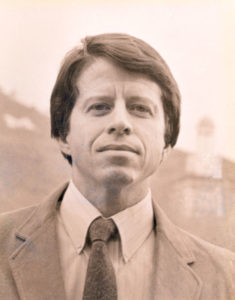1991 Distinguished Lecture Series: Don L. Williamson
Don Williamson
Biography
 Don L. Williamson is presently Research Professor and Professor Emeritus at the Colorado School of Mines and was recently Head of the Physics Department (1995-2000). After postdoc positions in Germany at the Institute for Metal Physics, University of Saarland, and in the Physics Department, University of North Carolina at Chapel Hill, he joined the Physics Department at the Colorado School of Mines in 1975. He has been engaged in solid-state physics and materials science research for over 30 years, and has published over 220 papers in these fields. Most of these publications are concerned with gamma-ray and x-ray experimental measurements, analyses, and interpretations.
Don L. Williamson is presently Research Professor and Professor Emeritus at the Colorado School of Mines and was recently Head of the Physics Department (1995-2000). After postdoc positions in Germany at the Institute for Metal Physics, University of Saarland, and in the Physics Department, University of North Carolina at Chapel Hill, he joined the Physics Department at the Colorado School of Mines in 1975. He has been engaged in solid-state physics and materials science research for over 30 years, and has published over 220 papers in these fields. Most of these publications are concerned with gamma-ray and x-ray experimental measurements, analyses, and interpretations.
Dr. Williamson has delivered six invited talks at international conferences. He received the Colorado School of Mines Faculty Senate Distinguished Lecturer award in 1991. Dr. Williamson is considered an expert in the applications of Mössbauer spectroscopy, x-ray diffraction, and small-angle x-ray scattering to both metals (particularly steels) and semiconductors (particularly photovoltaic materials), and has considerable experience with a wide variety of other materials characterization techniques.
He played an active role in the development of the Materials Science Program at Mines and has been instrumental in developing close ties between Mines and the nearby National Renewable Energy Laboratory (NREL). He continues funded research with NREL support and maintains the x-ray diffraction systems in the Physics Department for use by students and faculty of Mines. Professor Williamson is a member of the Materials Research Society, ASM International, and the American Physical Society.
Abstract
The main theme of the lecture is the value of using an interdisciplinary approach to research at a small technical university such as Mines. First, a description of a highly specialized but powerful experimental technique based on recoilless gamma-ray emission and absorption, known as Mössbauer Spectroscopy, is presented in simple layman’s terms.
Next, a brief history of the discovery by Rudolf Mössbauer (then a graduate student) and some of the more dramatic applications of the technique (observation of the gravitational redshift and relativistic time dilation) are presented, followed by a summary of the wide array of possible applications in various fields, particularly materials science, metallurgy, and chemistry. The use of this technique in my research at Mines is then summarized, with specific examples of valuable interdisciplinary collaborations with various Mines faculty as well as with scientists at the nearby National Renewable Energy Laboratory.
Finally, some research philosophy is presented based on two approaches: becoming an expert with a specialized technique versus becoming an expert with a special class of materials (such as steels or semiconductors). Both approaches are clearly aided by taking advantage of interdisciplinary interactions.